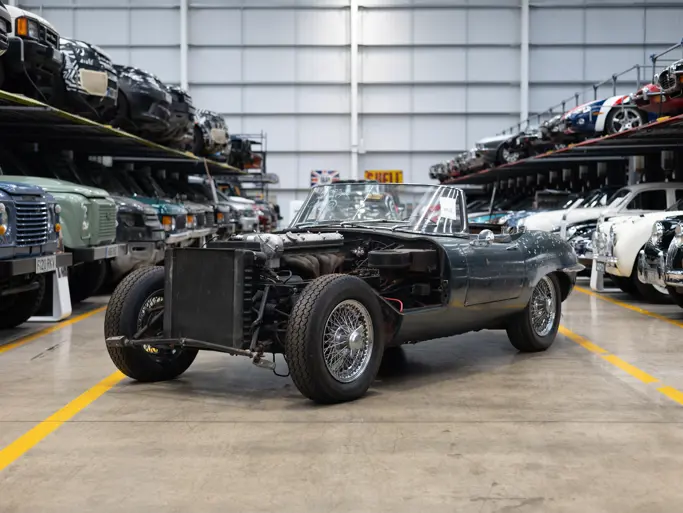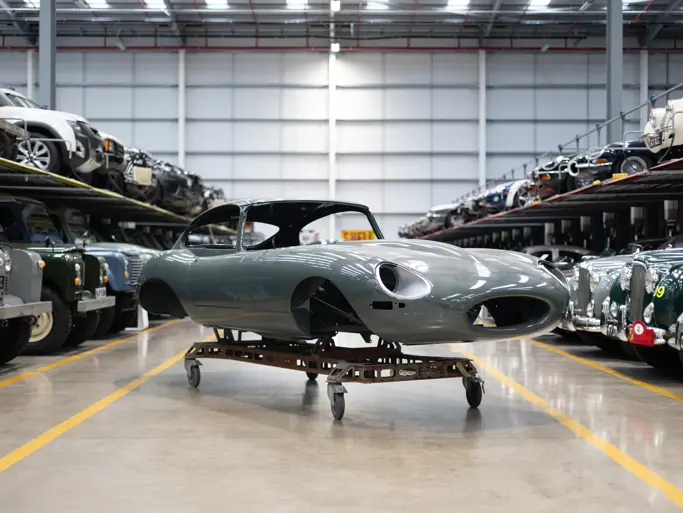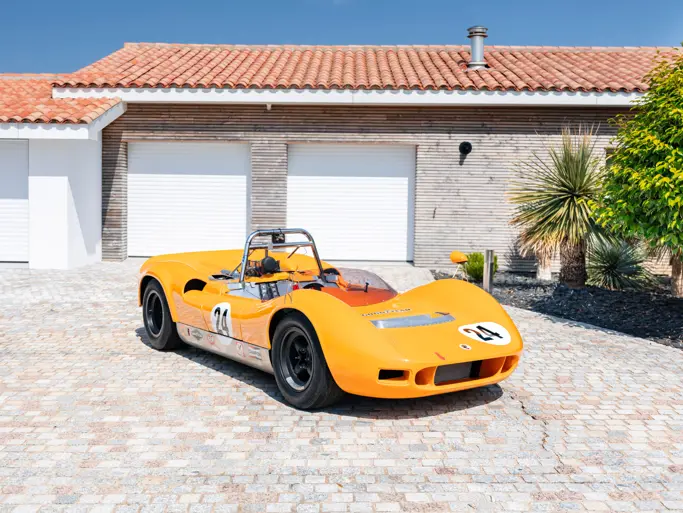Even in period, the Jaguar XKE was often described as one of the world’s most breathtaking sports cars and a “classic of the future.” The future is now; the beautifully sculpted 4.2-liter inline six Jaguar owed its basic design to a long racing heritage. It was available in two basic body styles, coupe and roadster, which are similar in specifications, except in minor details.
Its all-steel body is of a monocoque construction, a relatively new concept at the time of introduction. This is a form that results in a combination of maximum strength, rigidity and lightness. Not only beautiful, but functional, it was developed from extensive wind tunnel testing and motor racing experience at the highest level of competition. There was no separate frame with a stressed-skin structure forming the main body shell. A tubular steel front subframe carries the engine and the transmission; a fabricated steel rear subframe carries the rear suspension and final drive units; the entire shell was then welded into a single unit.
The E-Types four-wheel independent suspension was competition-based with excellent handling characteristics, along with outstanding comfort. This is attributed to the legendary D-Type racecar, as is the basic engine design. The famed Jaguar XK engine sped the competition cars at the grueling 24 Hours of Le Mans to five wins in seven years. Rugged and reliable, it moved the E-Type to “an easy 140-mph” with its standard rear end gear ratio and 10- to 20-mph higher with special ratios.
Since high speeds demand a first-class braking system, Jaguar provided the XKE with race-proven Dunlop discs at all four corners, with the rears mounted inboard. Comfort for both the driver and passenger and convenience of controls is apparent in the new-for-1965 thickly padded bucket seats that are separately adjustable fore-and-aft, plus for rake. The height and reach of the steering column and the position of the pedals are all well thought out for aiding the driving experience. Don’t be misled by the car’s overall outstanding visual effect; it’s a model of car to drive, not just look at and admire.
The bright red finish and black leather interior are a near-perfect combination to best illustrate the stylish design of the roadster. Powered by a 4.2-liter, 265-hp DOHC inline six-cylinder engine, this unit is mated to a four-speed manual gearbox; four-wheel disc brakes are also a most welcomed mechanical feature. The cockpit exhibits numerous authentic details; from the wood-rimmed steering wheel to aircraft-type toggle switches, radio and complete Smiths instrumentation. This represents an older restoration that is mechanically sound and is further equipped with a radio and knock-off wire wheels. This is a desirable Series I car with covered headlights adding to the timeless style associated with this model.

 | Fort Lauderdale, Florida
| Fort Lauderdale, Florida


